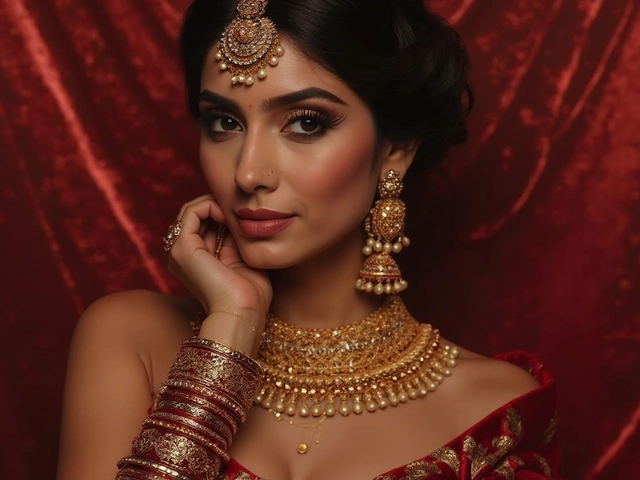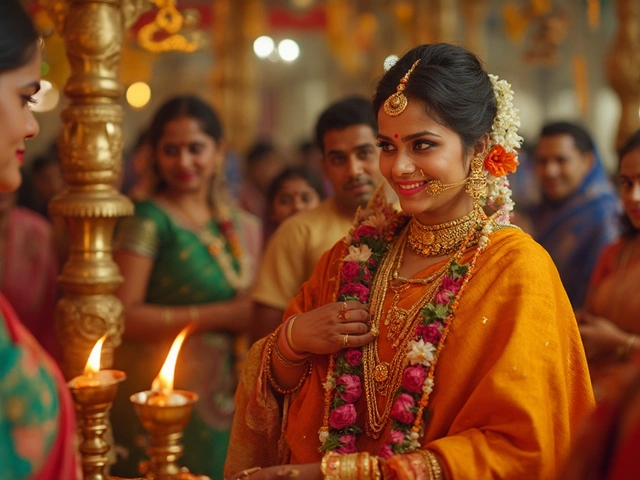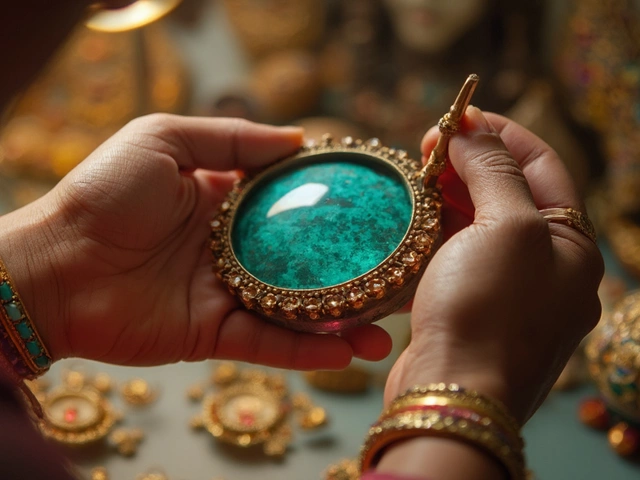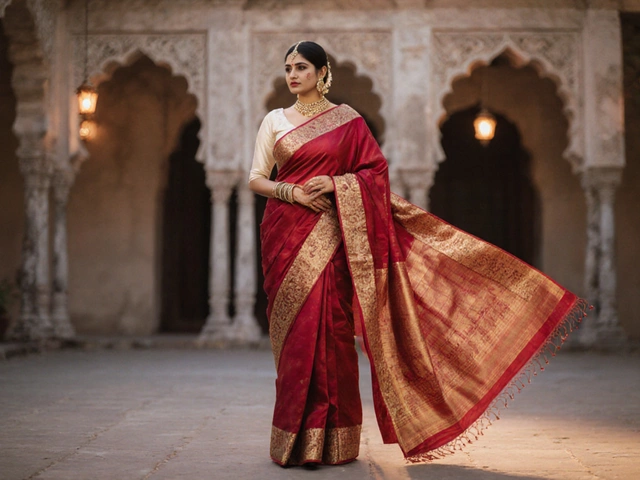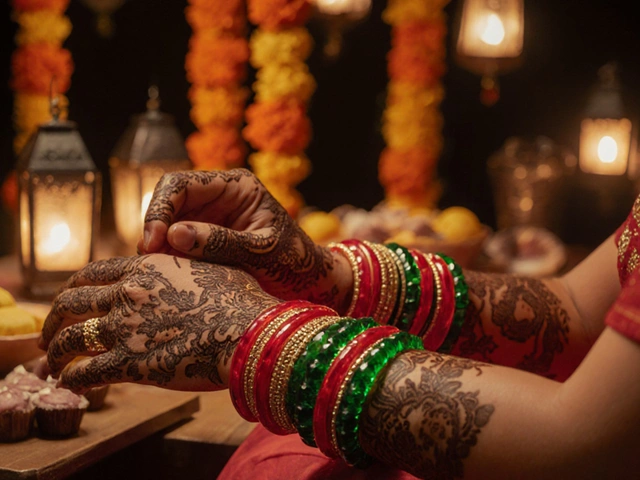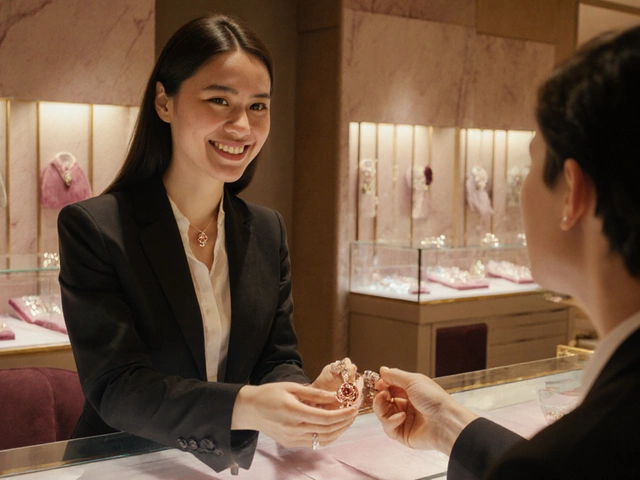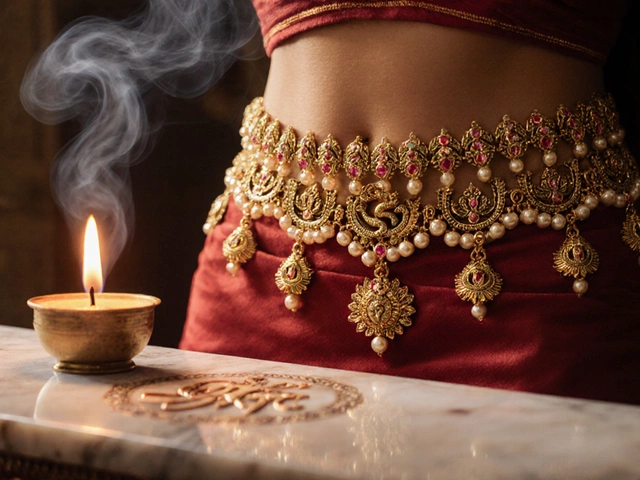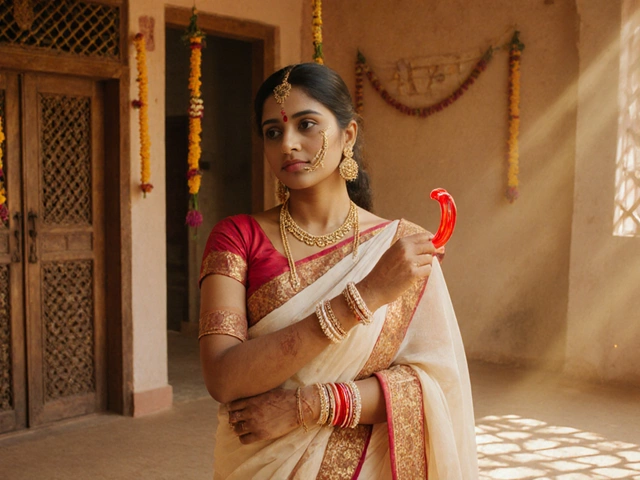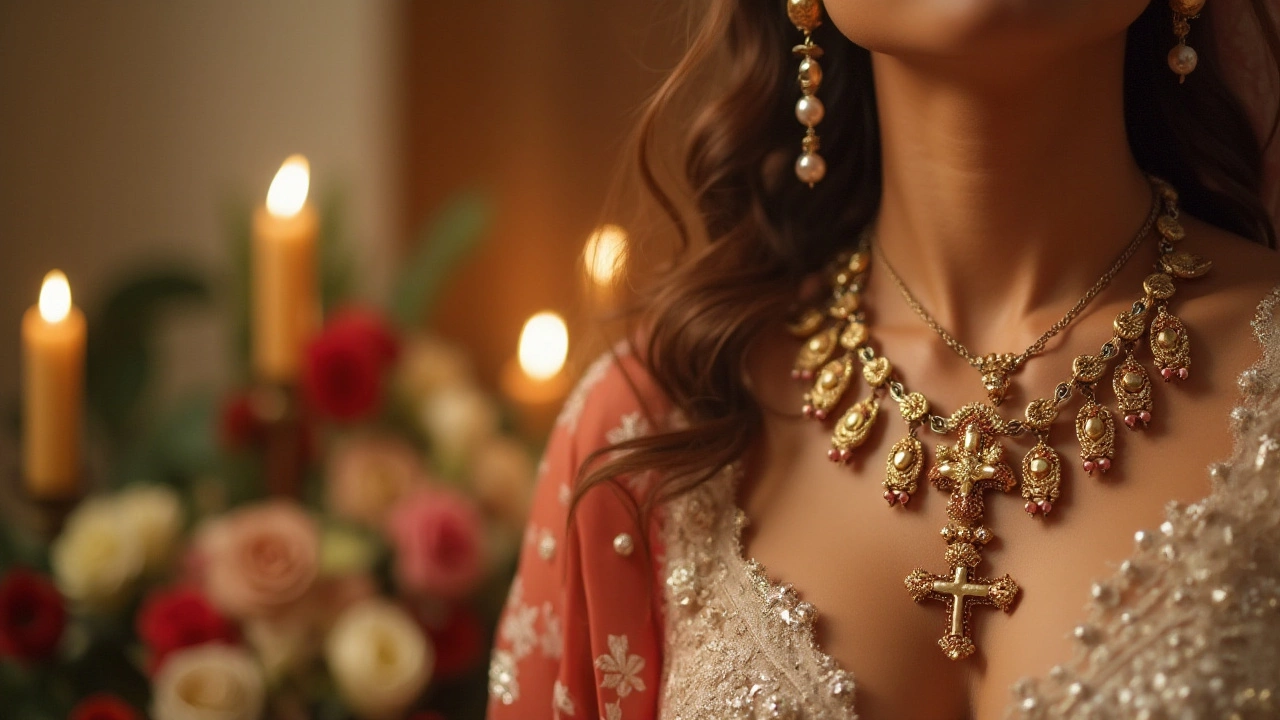
In the kaleidoscope of wedding traditions, the mangalsutra stands as a cherished symbol of matrimony in many South Asian cultures. This necklace, often crafted from black beads threaded on a gold chain, is steeped in history and meaning primarily in the Hindu community. However, the question arises: do Christians tie mangalsutra?
Many might initially think the concept is exclusive to Hindu weddings, but with the blending of cultures, some Christian communities have adopted the beauty and symbolism of the mangalsutra in their unique way. While traditionally not an element of Christian ceremonies, its elegance and significance as a token of love and commitment appeal to many.
This exploration into the cross-cultural embrace of mangalsutra sheds light on how traditions transform and expand. Whether as a nod to family roots or an expression of personal identity, the appeal of this piece of jewelry extends beyond its original confines, enriching the tapestry of wedding customs worldwide.
- Mangalsutra: Origin and Meaning
- Cultural Adoption by Christians
- Symbolism and Modern Interpretations
- Popular Mangalsutra Designs
- Crafting a Personal Style
- Celebrating Unity Through Diversity
Mangalsutra: Origin and Meaning
The mangalsutra is undoubtedly a symbol that carries with it an ancient weight of tradition and significance, especially in Hindu culture. At its most basic, it is a necklace that the groom ties around the bride's neck, signifying the couple's ever-lasting bond. Its roots can be traced back to South India, where it has been a part of the matrimonial ceremony for centuries. Traditionally, this auspicious necklace is believed to ward off evil and signify a woman's status as a married individual. The name 'mangalsutra' itself originates from the Sanskrit words 'mangal,' meaning holy, and 'sutra,' meaning thread, together implying a holy bond between the couple.
The design of the mangalsutra varies regionally, usually comprising gold and black beads. These black beads are thought to hold protective powers to shield the couple from negativity and ensure their marital happiness. In some Maharashtrian designs, there are two vatis (golden bowls), symbolizing Shiva and Shakti, representing the harmony between masculine and feminine forces within the universe. This highlights how the cultural nuances influence the mangalsutra designs, transforming them into personal tokens with deep-seated meanings.
As engagement practices become more global – people of different cultures blending their roots in a modern setting – the concept of the mangalsutra has also evolved. This piece of jewelry is no longer confined to its traditional look or uses. Fashion designers and jewelers have begun to innovate, reimagining it with different materials and styles, fitting the unique tastes of the contemporary bride. Adding more to its appeal, designers now incorporate diamonds, pearls, and varying precious stones, along with the classic gold and black beading, creating art pieces that carry tradition into modern times.
"The mangalsutra is not just jewelry; it is a tradition that intertwines spiritual connectivity and personal style for many brides across cultures," says renowned jewelry designer, Anju Modi.
In some modern weddings, particularly in the West, non-Hindu couples, including Christian couples, are adopting the mangalsutra to honor their partner’s heritage, blending customs as they create their own new ones. This adoption is more than aesthetic; it reflects a deeper understanding and acceptance of cultural differences, often serving as a bridge between families from diverse backgrounds. Thus, while the mangalsutra has roots deeply planted in Hindu traditions, its branches stretch into various cultural and religious practices today, demonstrating its multifaceted significance - as a tradition, a statement of style, and a bridge between traditions.
Cultural Adoption by Christians
The cultural tapestry of wedding traditions is an evocative blend of heritage and innovation, and the adoption of the mangalsutra by some Christian groups is a fascinating example of this evolving landscape. While the mangalsutra has its roots deeply entrenched in the Hindu faith as a symbol of marital commitment, its transition into Christian wedding rituals highlights the fluidity and adaptability of cultural symbols. The way this piece of jewelry has woven its way into a new faith speaks volumes of its beauty and symbolic power. Not simply an object of adornment, the mangalsutra embodies deep connection, having won a place in the hearts of many couples who honor cultural diversity and personal choice.
The adoption of the mangalsutra in Christian contexts can largely be attributed to the influence of regional and familial traditions. In areas like Kerala or Goa, where Christians and Hindus have historically shared communities, there is often a cross-pollination of customs and symbols. Here, weddings can showcase a wonderful intersection of rituals, where the mangalsutra serves not only as a nod to ancestral practices but also as an emblem of love transcending traditional boundaries. Some brides may choose to wear it alongside the more typical Christian symbols, such as the ring or the bridal veil, creating a personalized blend of tradition and faith.
The modern trend sees brides and grooms more willing than ever to celebrate their unique backgrounds by incorporating such cross-cultural elements into their nuptials. This isn't mere cultural borrowing; it’s a sincere embrace of plurality and a stylistic nod to history. A Bangalore-based jeweler specializing in mangalsutras noted a shift, saying,
"More Christian couples are inquiring and purchasing custom-designed mangalsutras. They see it as adding a layer of richness to their story."This sentiment reflects how important it is for couples to craft weddings that represent their individual love stories, styles, and beliefs.
Interestingly, the designs of mangalsutra for Christian brides often merge traditional aesthetics with contemporary flair. The motifs, while still carrying the classic black beads representing harmony, might also incorporate crosses or other Christian symbols, which optimally illustrate the union of two faiths in a celebration of love. Such adaptations show how the timeless appeal of the mangalsutra can be both preserved and innovatively expressed across different contexts. Academic reflections on this phenomenon suggest that these practices ensure that traditions do not stagnate but thrive by evolving and staying relevant. For Christian couples, integrating a mangalsutra might also serve as a symbol of unity not only between two individuals but between the various aspects of their heritage.
The evidence of this integration is seen beyond just ceremonial use, extending into how these customs are accepted into daily life post-marriage. For many of these couples, wearing a mangalsutra is a constant, visible reminder of their vows and their open embrace of cultural diversity. It offers an ongoing dialogue between their ancestry and their own modern-day reality, forging a path toward greater inclusivity in tradition. The phenomenon of Christian adoption of the mangalsutra demonstrates a remarkable cultural syncretism where diverse values and aesthetics coexist and flourish, offering invaluable lessons on respect and creativity in cultural practices.
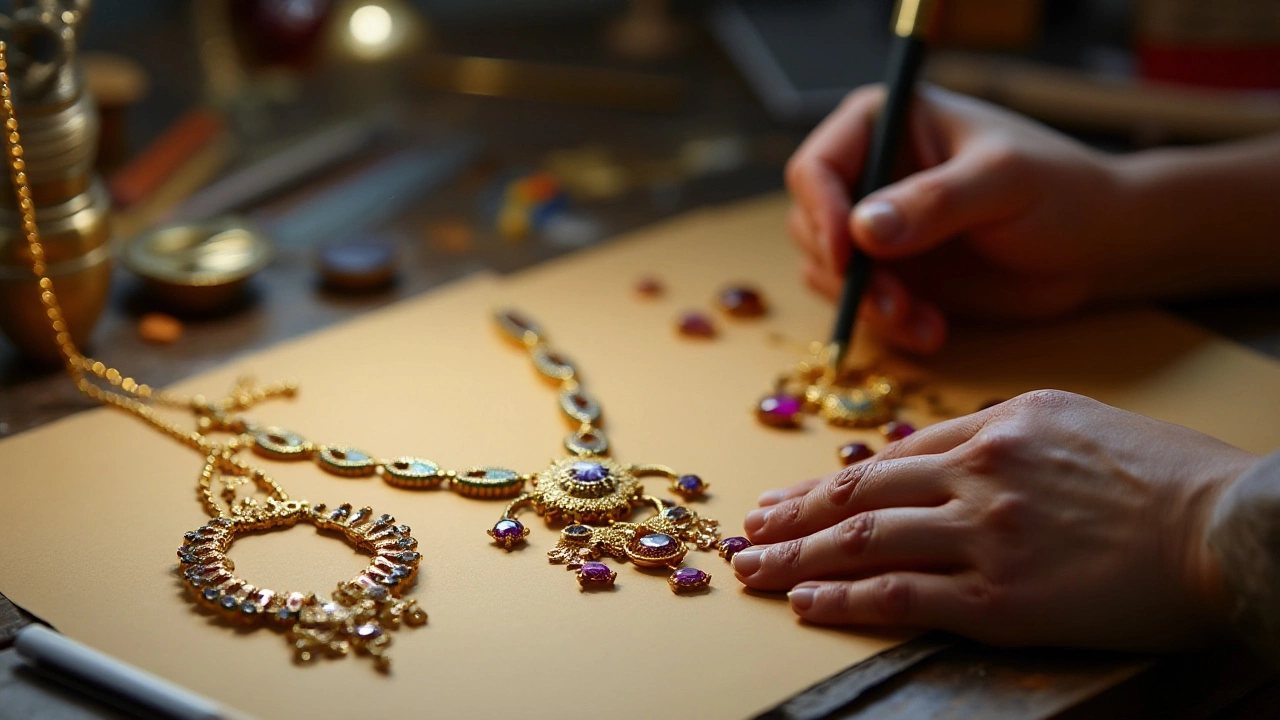
Symbolism and Modern Interpretations
Symbolism plays a crucial role in the significance of the mangalsutra in wedding traditions, and its modern interpretations are equally captivating. At its core, the mangalsutra represents a sacred bond between two people embarking on a life together. Traditionally, the necklace’s black beads serve as a protective charm, warding off evil while the gold chain signifies prosperity and well-being. Yet today, as cultures intermingle, the symbolism of the mangalsutra has begun to evolve, reflecting both modern tastes and pluralistic values.
In contemporary settings, many Christian couples incorporate a mangalsutra into their wedding ceremony, embracing its timeless symbolism while adding new layers of meaning. This isn’t merely about aesthetics or respect for tradition; it’s a celebration of shared values like love and fidelity. Some couples opt for mangalsutra designs that intertwine religious symbols like the crucifix with traditional elements, showing the harmony between diverse beliefs. It signals a shift from seeing the mangalsutra as a solely religious artifact to regarding it as a personal symbol of unity and dedication.
The modern interpretation of the mangalsutra is also rooted in personal expression. Jewelry designers now craft bespoke pieces that reflect the couple’s story, using contemporary materials or innovative designs that resonate with the wearer's sense of style. Such trends are evident in urban areas where couples prefer chic, minimalistic designs, seamlessly blending tradition and modernity. In some cases, the mangalsutra is styled in a way that makes it an everyday accessory rather than something reserved for special occasions.
"The mangalsutra has morphed from a traditional emblem to a personalized statement piece," says renowned jewelry designer Meera Joshi. "Its transformation mirrors how marriages are becoming more about shared dreams and less about inherited customs."
This personalization extends into the choice of materials. While gold remains a common choice for its cultural significance and durability, designers are experimenting with silver, platinum, and even unconventional materials like leather. This allows Christians, and people of various backgrounds, to weave this traditional element into their lifestyles both practically and aesthetically. The ever-evolving mangalsutra designs reflect the contemporary bride, sophisticated and global yet deeply rooted in her heritage.
Statistics on jewelry trends reveal a shift towards more personalized wedding symbols. According to a survey by the Global Jewelry Insights Report, approximately 40% of couples now opt for customized wedding adornments, reflecting a growing preference for items that tell a personal narrative. As this trend continues, the mangalsutra’s role will only expand, merging revered traditions with individual expression in an increasingly interconnected world.
Popular Mangalsutra Designs
The world of mangalsutra designs is as diverse as the cultural landscapes that inspire them. Originating as a simple thread with black beads, the mangalsutra has evolved into a canvas for artistic expression and personal style. Among the many popular designs, the traditional simple gold chain stands firm due to its classic appeal and cultural authenticity. Many brides cherish these traditional pieces as they echo timeless elegance and ancestral significance. However, today’s market also brims with modern adaptations that beautifully incorporate precious stones, diamonds, and intricate gold motifs, reflecting a perfect blend of tradition and contemporary flair.
Gold remains the most coveted choice for crafting these auspicious necklaces, often representing prosperity and purity in matrimony. Jewelers have become increasingly creative, offering designs that include diamond-studded pendants, heart shapes, and floral motifs, each design holding its unique charm and appeal. A growing trend among young brides is the pairing of their mangalsutra with their engagement or wedding rings, creating a coordinated and harmonious bridal set. This not only adds a personal touch but also ensures the mangalsutra complements other significant pieces of jewelry worn on the wedding day.
"The beauty of the mangalsutra design lies in its ability to adapt and resonate with a bride’s personality," notes acclaimed jewelry designer Anjali Sinha. "While some prefer the understated elegance of a simple chain, others are drawn to the sophistication of diamond embellishments and intricate craftsmanship."
Customization plays a crucial role in today’s popular design choices, allowing brides to infuse their personal stories and style. Some opt for locket-style pendants that open to reflect personal elements such as photos or engraved initials. This trend offers a dual purpose of maintaining tradition while serving as a keepsake of personal memories and shared journeys. Additionally, incorporating gemstones of specific colors that symbolize particular attributes, such as passion or serenity, is gaining momentum, adding a layer of personalization and meaning to the design.
An interesting cultural adaptation seen in some Christian communities is the integration of religious motifs or crosses into the mangalsutra design. This reflects a beautiful intersection of cultural traditions, offering a symbol of both faith and commitment uniquely expressed through jewelry. Despite personal preferences, the essence of any popular mangalsutra design lies in its ability to carry forward its symbolic weight in a manner that aligns well with the bride’s beliefs and lifestyle.
In terms of regional variations, North Indian designs typically favor shorter chains and extra embellishments, making them highly favored for their ornamental richness. Conversely, South Indian versions tend to prefer longer, heavier designs that emphasize the mangalsutra’s significance as a stand-alone piece of central bridal jewelry. Both styles remain incredibly popular, showcasing the unique taste and preferences of diverse communities across India and beyond. This variety ensures that there is a design for every bride, regardless of her aesthetic leanings or cultural heritage.
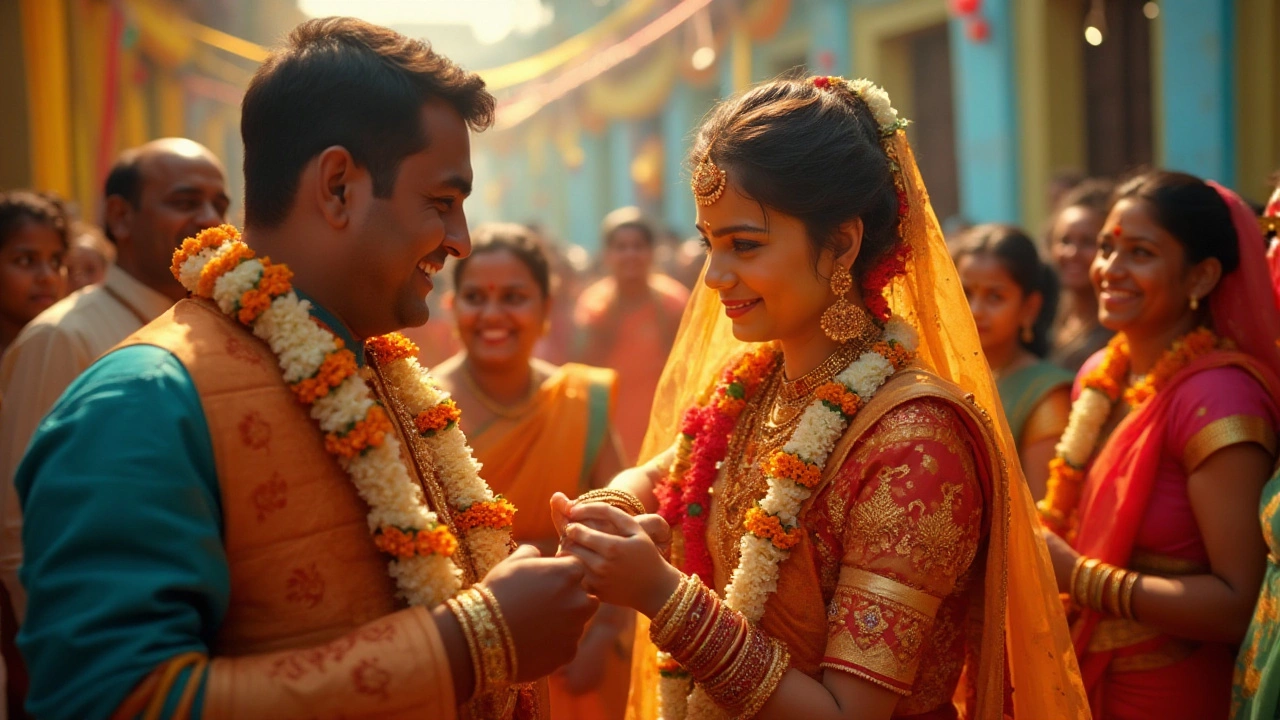
Crafting a Personal Style
Creating a personal style with the mangalsutra involves blending traditional elements with contemporary individuality, a reflection of personality and heritage. With its origin deeply rooted in South Asian culture, this piece of jewelry has become a canvas for expression. Christian brides who choose to incorporate it into their repertoire have an exciting opportunity to customize it according to their personal tastes and cultural influences.
Personalizing a mangalsutra often begins with selecting materials that resonate personally. Traditional black beads might be paired with a variety of precious stones, lending both color and meaning. Imagine a bride opting for sapphires, perhaps reflecting the faith and sincerity often symbolized in Christian ceremonies, while also bringing in the rich history of marital jewellery. The choice of gold, whether white or yellow, can also echo wider familial or cultural significance.
Design and Aesthetic Choices
Design choices abound, from minimalist strands that complement modern aesthetics to intricate goldwork that pays homage to heritage. Some may choose to integrate symbols of their faith, creating a unique fusion of belief and tradition. Engravings of initials, significant dates, or even religious motifs provide a bespoke touch.
As the famous designer, Sabyasachi Mukherjee, once said, "The beauty of any piece of jewelry lies not just in its craftsmanship, but in the emotion and story it carries with it."By adopting this philosophy, couples can create a powerful personal narrative through their mangalsutra.
The design phase allows for collaboration with artisans who specialize in both the tradition and innovation of jewelry making. Whether the choice is a single delicate chain or a layered necklace, today's Christian bride can direct every aspect from bead size to pendant shape, thus ensuring their jewelry speaks to their unique journey. Many opt for pendants that tell a story, wrapping grains of sand from where they first met, or charmed symbols that mark their shared life journey.
Incorporating Modern Trends
Modern trends support incorporating the mangalsutra into everyday wear, seamlessly aligning with regular attire without losing its symbolic essence. With comfort and versatility in mind, the focus on lightweight designs is increasing. Designs that are convertible, for instance, allowing the necklace to transition between day-to-night wear, are gaining popularity among young brides eager to maintain a balance of tradition and style. This evolving trend makes the mangalsutra not only a cultural artifact but a part of daily fashion.
It's fascinating how traditions can be both preserved and transformed, as evidenced by the growing variety of mangalsutra designs that cater to individual preferences. Whether it manifests as an overt link to their heritage or a subtle nod to family tradition, many Christian women find that personalizing their mangalsutra reflects the vitality and beauty of merging world's cultures.
Celebrating Unity Through Diversity
The concept of unity through diversity is beautifully exemplified when varied cultural practices and traditions intertwine, like the adoption of the Mangalsutra in some Christian weddings. At the core, this practice reflects how humanity continues to embrace and celebrate differences while forging new paths of shared traditions. Although not originally part of Christian marital customs, incorporating the mangalsutra signifies a personal and familial way of honoring roots and embracing cultural heritage. This unifying symbolism is a testimony to how different communities can coalesce to create a harmonious blend of meaningful traditions.
History shows us multiple instances where traditions cross boundaries, often leading to hybrid customs that enrich societies. Take, for instance, the exchange of rings, a practice that spans various cultures and religions. Similarly, in regions like South India, a few Christian families have begun to include the mangalsutra as part of their wedding ceremonies. This adoption does not stem from an obligation but from a genuine appreciation and respect for the symbolism it holds—protection, love, and unity. A Christian bride wearing a mangalsutra not only represents marital commitment but also narrates a broader story about shared cultural acknowledgment and respect.
Part of what makes the celebration of cultural diversity so enriching is the creative freedom it provides. The Mangalsutra is no longer limited to a singular design or interpretation. It evolves with time, incorporating elements and influences from various traditions and personal preferences. Celebrating such diversity necessitates open-mindedness and understanding. It involves artists, jewelers, and families working together to design pieces that hold individual and communal significance. According to The Times of India, some designers have begun to craft mangalsutras featuring contemporary designs that appeal to a wider audience without losing their essence.
In the broad spectrum of tradition, it is vital to remember that symbols like the mangalsutra may vary greatly in appearance but not in purpose. The thread that runs through all these varied interpretations is the promise—the pledge of unity bestowed upon the bride by her groom. As the world becomes ever more interconnected, these cultural exchanges will perhaps become not just prevalent, but celebrated, forming new legacies. Future generations may look at these hybrid traditions not as anomalies, but as testaments to love’s ability to transcend boundaries. As a wise saying goes, "Our ability to reach unity in diversity will be the beauty and the test of our civilization."
Ultimately, celebrating unity through diversity is about looking beyond differences and finding strength in them. For those partaking in such hybrid traditions, the mangalsutra may become a cherished heirloom—a keepsake that speaks volumes about family history and evolving cultural landscapes. Whether as a nod to tradition, a representation of personal values, or a creative assessment of both, the message remains the same: love and harmony are universally celebrated and shared.

